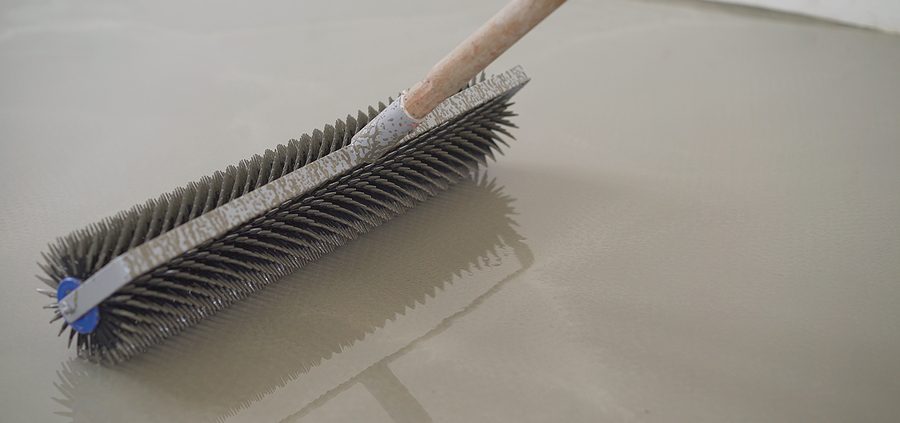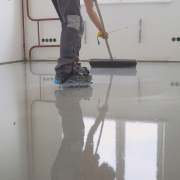Floor Leveling Options For Older Homes
While they are full of unique charm and beauty, older homes can also come with slanted, uneven flooring. Slants, humps, or dips in older flooring can have a variety of causes, but most often are simply the effect of wear and tear over many years of use. Luckily, if you are dealing with uneven floors in an older home, you have options.
Why is Floor Leveling Important?
Aside from simply wanting to restore the beauty of your home’s floors (which is a good enough reason, in our opinion), there are many reasons to level out the slants or dips in an old floor.
A level floor adds value to your home. Even if you’re not planning to sell anytime soon, it’s important to consider resale value when maintaining your home. Homebuyers automatically associate uneven floors with structural deficiencies, even if that’s not the case. This can cause them to ask for a lower price or to walk away from the sale entirely.
Level flooring, on the other hand, exudes sturdiness and imparts confidence in a prospective buyer that the home will stand the test of time. Ultimately, leveling out your floor could get you more money when you go to sell. The same applies if you need to take out a home equity loan—the condition of your flooring is one of the considerations used to estimate the value of your home.
In addition, if you are considering new floor coverings, it simply doesn’t make sense to put beautiful new floors on top of uneven subfloors. Quality installation of any type of floor covering relies on first having a level subfloor. Imperfections in the subfloor can transfer to the finished floor in the form of dips, humps, or slanting—even in brand new floor coverings.
New flooring—whether it’s hardwood, carpet, tile, or another floor covering—is an investment, and having a level subfloor helps ensure a longer life for that investment. In the same way that your home needs a level foundation, your flooring needs a level subfloor.
Installing floor covering over a level subfloor will not only look better, it will also be faster to install, costing you less in labor. And with lower maintenance costs and fewer repairs, it will save you money in the long run.
Floor Leveling Options For Older Homes
Most residential floors sit on top of wood joists or a concrete slab, and are not usually perfectly level—it’s common for there to be a fraction of an inch slope across a room that is generally unnoticeable. But when the subfloor develops a bigger slope or other issues like big dents or waves, it will significantly affect the look and longevity of your floor covering.
When it comes to floor leveling options for older homes, the following are the most commonly used:
- New Plywood Sheets for the Subfloor. Water damage and age can warp or rot subfloors, making this a common cause of unlevel floors in older homes. It’s a relatively quick and easy fix.
- Sand or Plane Wood Subfloors. For wood subfloors, it’s sometimes possible to sand down any raised seams between the sheets of plywood subflooring.
- Grinding Down High Spots in Concrete Subfloor. Similarly, for concrete subfloor that has only a few humps, it’s possible to grind those high spots down to create a smoother finish.
- Using a Self-Leveling Underlayment. A product with a batter-like consistency that flows into dips, holes, and cracks to produce a smooth, strong, and level surface. This is the best way to fill in uneven or sloped floors.
Benefits of Self-Leveling Underlayment
There are two main types of self-leveling underlayment: cementitious underlayment and gypsum underlayment.
Cementitious underlayments are generally made of a blend of portland cement and gypsum cement, with the addition of polymer additives, super plasticizers, and set modifiers to produce a product that simulates the leveling properties of water. This type of self-leveling underlayment:
- Can be installed thin, from ⅛”-1” thick, but can be extended with pea gravel for thicker fills.
- Can be used to resurface floors as both an underlayment and an overlayment that can be used as a wear surface with proper sealing.
Self-drying versions of cementitious underlayment are also available, with additional additives to create a product that dries quickly, allowing floor coverings to be installed 16-24 hours after placement. These products are ideal for tight time schedules.
Gypsum underlayment is one of the most versatile and cost-effective floor levelers available. This self-leveling underlayment:
- Can be installed from ¼”-4” thick
- Dries faster than concrete
- Finishes flatter than concrete
- Costs less than cement-based self-leveling products
- Can be installed over existing floors in just a few hours
- Is ideal for use with radiant heat (hydronic or electric) installation
- Can be poured over either concrete or wood-framed structures
Self-leveling underlayments can be applied in a wide variety of situations, from basement or garage floors to forming a foundation for new hardwood, tile, laminate, carpet…just about any type of flooring you can think of.
Why Hire a Pro to Apply Self-Leveling Underlayment?
As with many home improvement projects, it is possible to apply self-leveling underlayment yourself. However, there are many reasons why it’s better to have a pro do it for you. To begin with, self-leveling underlayment:
- Dries very quickly, which means it needs to be worked very quickly. Depending on the product you use and the conditions you are using it in, you could have as little as 20 minutes to mix, pour, and finish your surface. Without the experience and skill of a pro, you could end up with concrete that has set before you can pour it all into place.
- Can stick to tools and other surfaces that it splashes onto. These surfaces will need to be quickly and properly cleaned so they aren’t permanently stained.
- Does not reinforce the subfloor beneath it. If something goes wrong with the subfloor, the self-leveling underlayment can loosen, resulting in damage to your floor covering. A pro will assess the health of the subfloor and help you determine the best course of action to repair any issues before applying the self-leveling compound.
For more details about why applying self-leveling underlayments is a job for a pro, take a look at our recent blog on the topic.
Properly leveled floors require expertise and planning, as well as the right leveling products and skills. And every floor leveling project is different and has unique challenges. A pro will be able to evaluate what products are best suited to each application, based on best practices for installation and years of experience.
Here at ATR Floors, our knowledgeable team can determine the specific needs of your project and the best products to use to gain the results you are looking for. If you are looking for floor leveling options for your older home, we can help. Contact us today!





